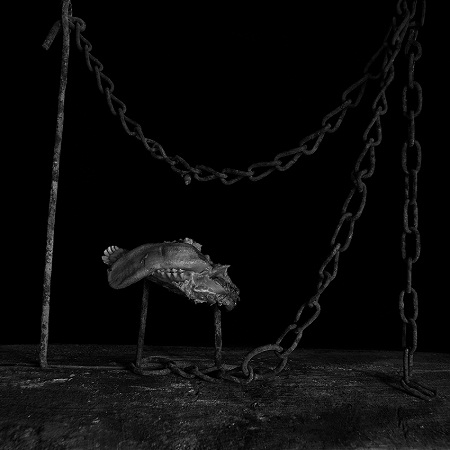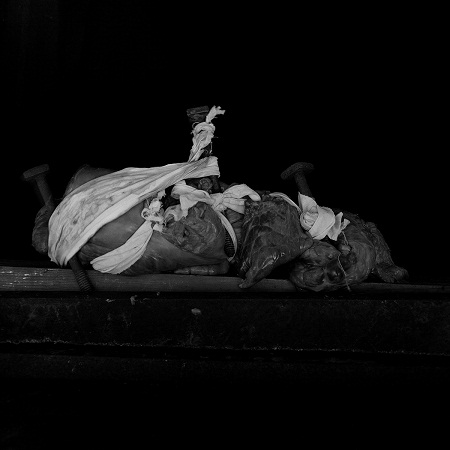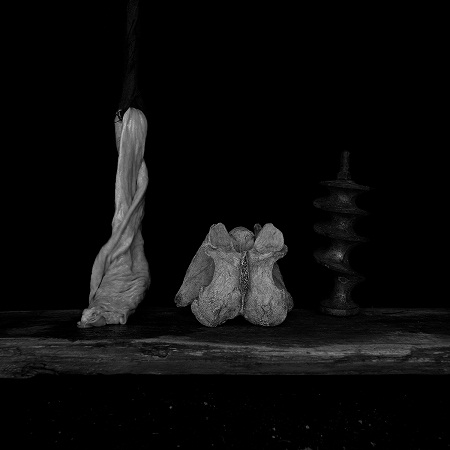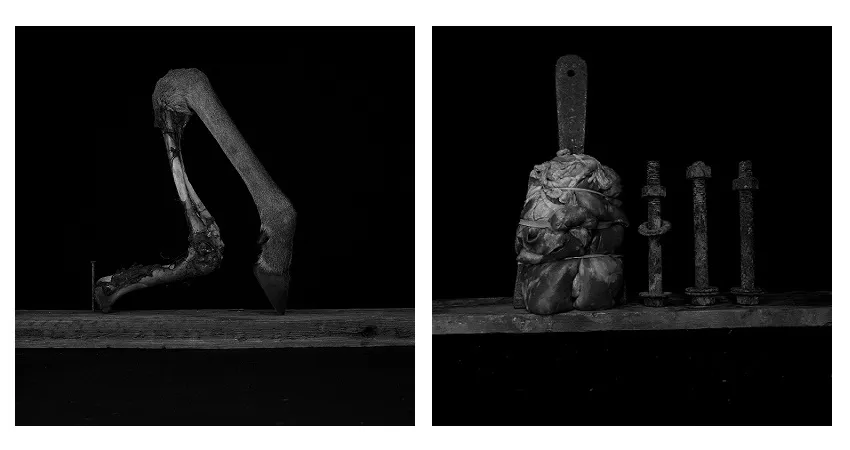EnFoco. ELENA DE LA RÚA
The exhibitions that make up the EnFoco series are the result of an open competition organized by CentroCentro. The photographers have been selected by a jury for the solidity of their works and their exhibition projects. For all of them, this is their first individual exhibition in a public institution.
EnFoco presents now Fear as a Wound, by Elena de la Rúa, a series of 11 photographs that explore fear both from the inner perspective of the body and the outer space that sorrounds us.
"The soul breathes through the body and suffering, whether it begins in the skin or in a mental image, it happens in the flesh”
Antonio Damasio. Descartes (1994)
"Night has fallen, I am in bed, about to fall asleep. Suddenly I hear a loud, sharp bang. My pulse races, my blood stops flowing to my limbs, I break out in a cold sweat and my stomach shrinks. My head fills with terrible images of violence perpetrated on flesh and I feel as if I were facing great danger. Easy, there now, you are safe, and it is all the result of my imagination. Is my fear real or is my head playing tricks on me?
Neurologist Antonio Damasio says that our emotions provide a natural environment in which the brain and the mind can take stock of our interior and the outside world in order to deploy the necessary responses that promote survival and regulate life in a positive state. The devices we use to feel emotions are activated at birth, but the one we use to deploy our emotions changes as we gain experience and as we learn. According to the work of zoologist Robert Hinde, such learning is not acquired through exposure to the object that triggers fear, rather through exposure to the expression of fear. Fear as an emotion, says Damasio, manifests itself in the presence of an external trigger - real or remembered - which we interpret as a threat or a danger and that triggers a pattern of behaviour that involves alterations in the body in terms of pain: the pupils dilate, sweating increases, the veins and the arteries constrict, the heart beats with greater intensity, the muscles tense, the bronchial tubes expand, the stomach slows down, the intestines become paralyzed and the activity of the brain increases. After we have felt the actual emotion, thoughts related to that fear appear, thoughts that are based on memories or on the imagination in what is a two-way network: the emotions trigger thoughts and the thoughts trigger yet more emotions. Our brain then receives signals from the depths of our flesh, mapping out the structure and condition of our viscera and producing mental images in the form of an idea: the feeling of fear.
It seems that these days we live our lives in a state of helplessness and vulnerability, threatened and beset by imagined fears. As sociologist Hugues Lagrange explains, this is an anguish that is recycled socially and culturally, it is a derivative fear that guides people’s behaviour no matter whether an immediate threat is or is not present. It is as if it was a sediment of a past experience of a direct confrontation with the threat: a wound that survives that encounter and dictates how we behave even when there is no direct threat at all, a form of behaviour that has to do with our lack of confidence in the defences that are available to us. This experience of confrontation is not unreal, it is not imagined. They are the images and messages of terror to which we are exposed in our homes on a daily basis, images and messages that have hurt us as a possibility to which we are now exposed and against which there is no possible defence.
Historian Lucien Febvre spoke of the omnipresence of the fear of the darkness that began on the other side of the door to our little hut and that enveloped the world beyond our farm. But the darkness is no longer on the outside. The darkness has crept into our house, into our minds. As writer and journalist Mark Danner puts it: 'The unthinkable, the unimaginable, has become brutally possible' ".
Elena de la Rúa is a photographer born in Madrid, 1978





